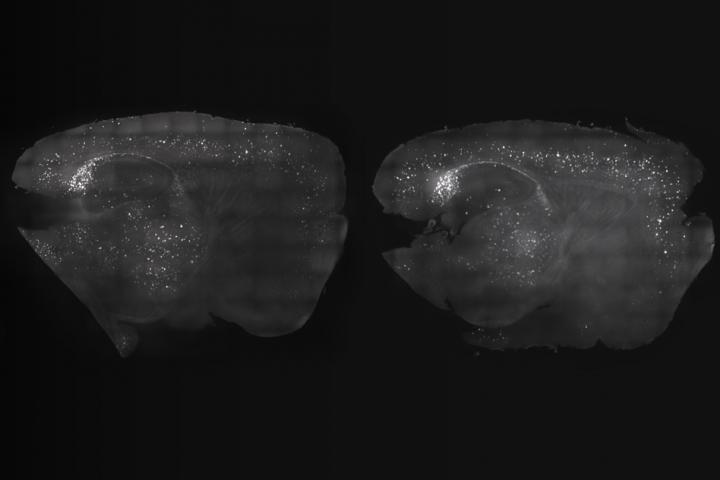Are blinking lights and clicking sounds the key to clearing the beta-amyloid plaques that accumulate in Alzheimer's?
Research from a new study out of M.I.T. shows that specific combinations of light and sound are able to greatly reduce the toxic protein build-up in mice. Could it work for humans, too?

That’s the question on everyone’s mind after seeing the results of a study led by Li-Huei Tsai, a prominent neuroscientist. This study, which only involved mice and not people, builds on previous research on how flickering light induces brain waves known as gamma oscillations.
How Light and Sound Affect Brain Waves
These brain waves are sort of like the conductors of the brain—they keep everything moving and in check. They occur when several neurons fire at once, creating a synchronized pattern of electrical activity. In normal, healthy brains, these electrical pulses happen at different paces, depending on whether a person is asleep or active. But in people with neurological disorders like Alzheimer’s and schizophrenia, scientists can see that these waves are interrupted.
In a past study, it was seen that light at 40 hertz, a speed of light that seems to mimic the brain’s natural rhythm, helped to clear beta-amyloid and tau, another toxic protein that forms into clumps, in the brains of mice genetically engineered to have Alzheimer’s. For this study, scientists added a clicking noise.
“When we combine visual and auditory stimulation for a week, we see the engagement of the prefrontal cortex and a very dramatic reduction of amyloid,” says Li-Huei Tsai, director of M.I.T.’s Picower Institute for Learning and Memory and the senior author of the study.
With the added clicking noise, the amyloid-clearing effects expanded from the visual cortex to the auditory cortex and hippocampus, both key in memory processes, and the prefrontal cortex, an area of the brain that manages executive decision making and planning.
“What we have demonstrated here is that we can use a totally different sensory modality to induce gamma oscillations in the brain. And secondly, this auditory-stimulation-induced gamma can reduce amyloid and Tau pathology in not just the sensory cortex but also in the hippocampus,” says Tsai, who is a founding member of M.I.T.’s Aging Brain Initiative.
Why Do Light and Sound Help With Signs of Alzheimer’s?
So, what is the magic of the 40 hertz light and the clicking noise, which was delivered to mice for an hour per day for seven days? Scientists are not exactly sure, but it may have to with those stimulants encouraging microglia in the brain. Microglia are known as the janitors of the brain, and they help clear up debris. Microglia are thought to protect against Alzheimer’s, but it’s also thought that microglia that get too activated can cause inflammation and actually contribute to Alzheimer’s.
When the mice received the auditory and visual simulation, not only did it change their brains as well as their blood vessels, it also affected their cognition. In maze exercises that tested their memory, they were able to perform better and recognize previously-encountered objects.
However, the effects of the dual treatment faded after just a week of pausing the lights and sounds, said the researchers in the study paper, which was published in the journal Cell.
When Will Light Therapy and Sound Therapy Be Available for Humans?
Researchers have begun to perform safety tests on humans, but more studies are needed before safety and effectiveness can be determined. They are beginning to enroll participants in this ongoing study in order to understand how and why the stimulations work.
Tsai cautions that people should not try this at home. “What I’m worried about … is a lot of people wrote to me and just said they are making a home device,” she told Being Patient about her earlier study. “I’m very worried about that because the wrong frequencies may be detrimental.”
Forty hertz light is less of a flash and more of a twinkle or a glow, said Tsai. If this treatment is successful in humans, she envisions a sort of type of goggles that might one day deliver sound and light stimulation. But in order to work, Tsai said the gamma waves need to be corrected very early in the disease, decades before symptoms like memory loss appear.
“For human trials, I definitely would suggest going in with very early stage to begin with simply because, in the moderate to severe stage, so many of the brain cells are already dead,” she told Being Patient in 2017. “For this approach to work, you still need functional interneurons and some neurons there so they can oscillate.”


